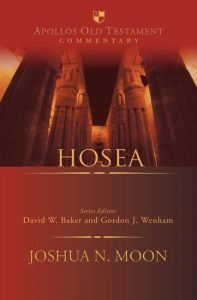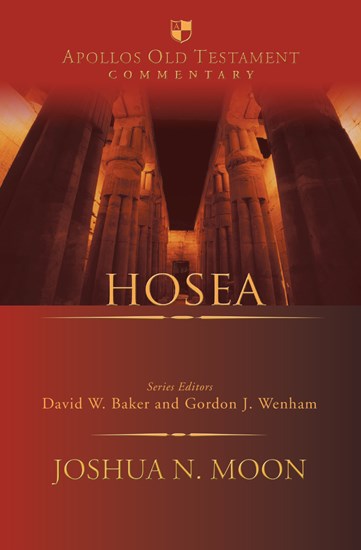Moon, Joshua N. Hosea. Apollos Old Testament Commentary, 21. London, England: IVP Academic. 2018, pp. 253 Available in hard copy.
Joshua N. Moon (PhD) is Fellows Tutor at Anselm House, on the campus of the University of Minnesota, St Paul.
Joshua Moon’s commentary on Hosea is another excellent addition to the Apollos Old Testament Commentary Series. He “sets the prophecies of Hosea in the context of the eighth century BC. The concern of his commentary is the importance of reading Hosea as Christian Scripture, in which we are meant to hear God’s own voice as he calls his people to himself. Moon demonstrates the continuing importance of hearing God’s words through Hosea, situating the reading of each section within the larger biblical and theological concerns.” (Cover statement)
The commentary is divided into two major sections: 1. Introduction and 2. Text and Commentary. The Introduction deals with the historical backdrop; Hosea among the prophets; and development, text, and structure of Hosea. There is one excursus on Hosea 6:2 and the resurrection of Jesus. The indices of bibliography, scripture references, authors and subjects are extensive and beneficial.
The Text and Commentary chapters are divided into five sections: 1. Translation, 2. Notes of the Text, 3. Form and Structure, 4. Comment and 5. Explanation. Moon’s translation is clear, fluid and primarily based on the Masoretic tradition. The Translation incorporates his detailed analysis of many manuscripts and translations. The Notes of the text are practical and persuasive. This section of the commentary will be challenging to those who do not fully understand the intricacies of textual criticism. Form and structure are interesting but seem forced at times when there does not seem to be an obvious structure. I found it challenging at times to distinguish differences between the two sections of Comment and Explanation. The comment section seems to be more exegetical or expository, while the explanation section is more homiletical and applicational. The comment section references many biblical, theological or New Testament themes that I would prefer to be left in another section like “Biblical and Theological Tangents.” The explanation section provides more information about historical and cultural customs or norms. An excellent example is Moon’s discussion on the identity Gomer, the wife of Hosea (pp. 36-44).
All students of the Bible will find value in this commentary, but not necessarily equally in all five sections. The most noteworthy sections to most readers will probably be Comment and Explanation.
John A. McLean
Liberty University Rawlings School of Divinity.





